Connecting Bold BI to Asana data source
Bold BI dashboard designer supports connecting to Asana web services through the REST API.
Choose Asana data source
To choose Asana as a data source, follow the steps below:
-
Click the Data Sources button in the configuration panel to add a new data connection.

-
Click CREATE NEW to launch a new connection from the connection panel.
-
Select the Asana connection in the connection panel.
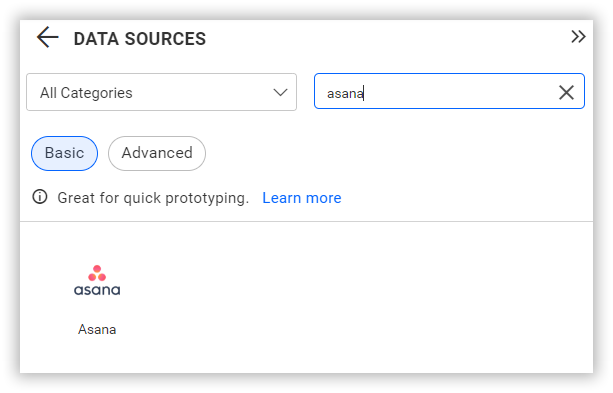
NOTE: You can also create a data source from the home page by clicking the Data Sources menu from the left menu panel and selecting Create Data Source.

How to Obtain the Asana Client ID and Client Secret
Note: Asana OAuth credentials are required for the On-Premises Deployment, but they are not needed in Syncfusion Managed Cloud Server.
-
Login to your Asana account by clicking on Asana Login.
-
Click on the User icon and select the My Settings category.
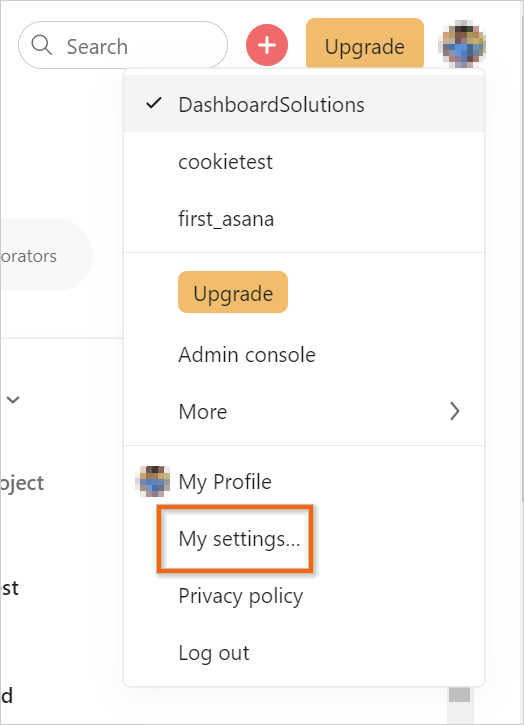
-
In the My Settings menu, go to the Apps tab and click on Manage developer Apps at the bottom.
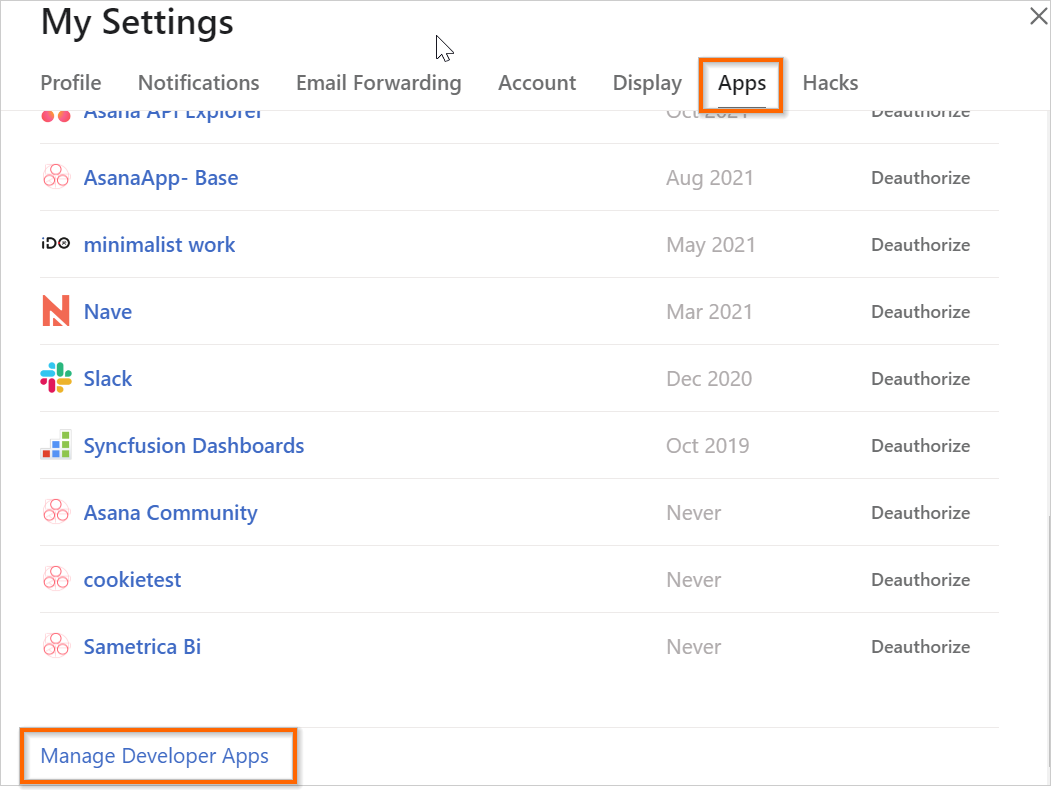
-
On the My Apps menu, select Create new app.
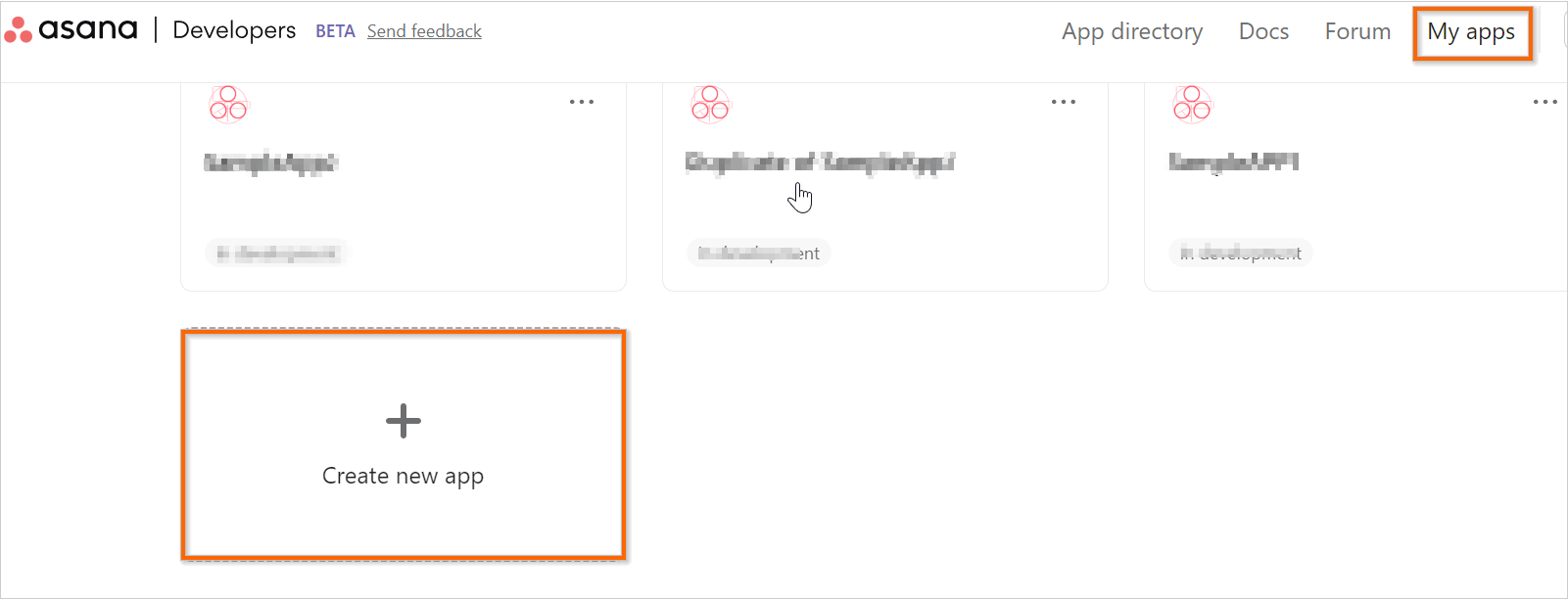
-
Fill in the App Name, enable the API terms and conditions, and click on Create new app.
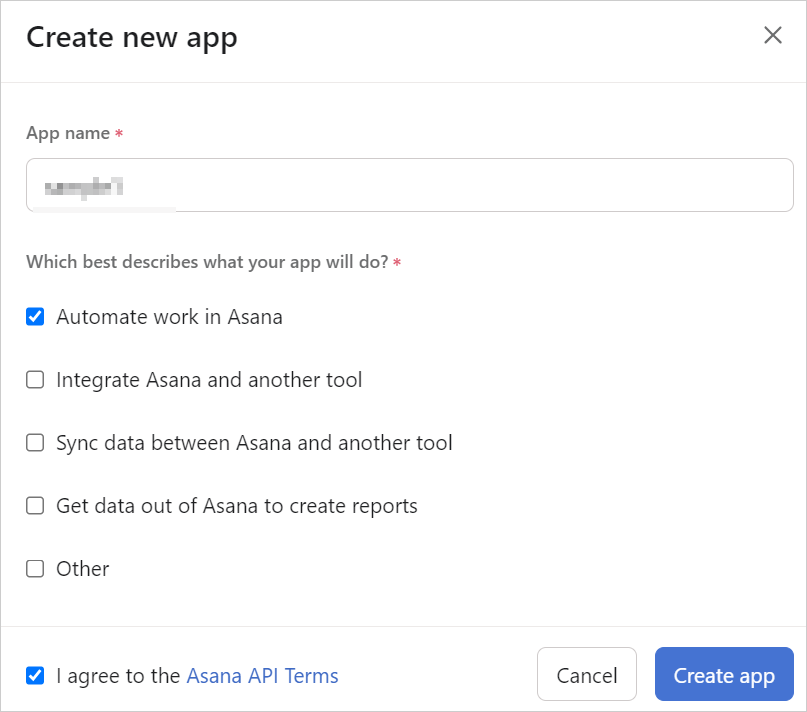
-
Once the app is created, the Client ID and Client secret will be displayed.
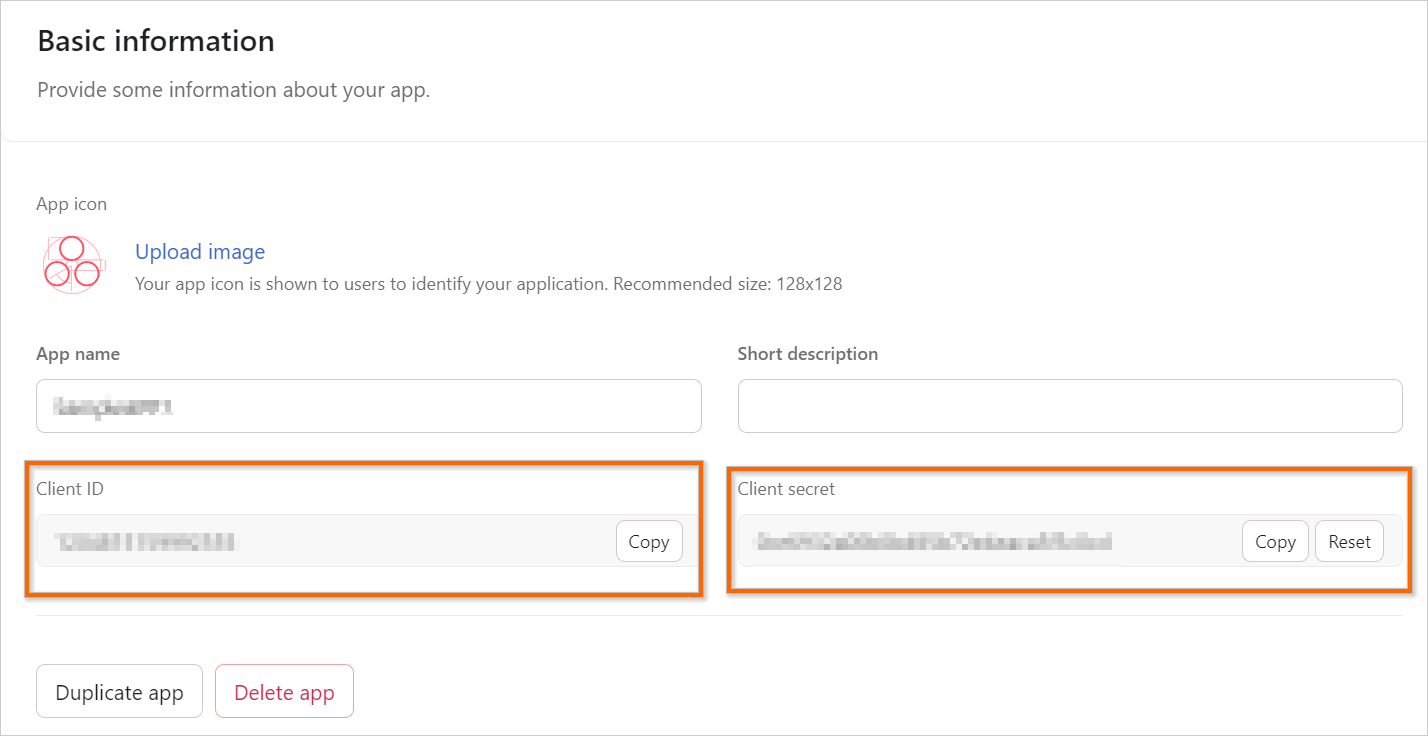
-
Go to the OAuth page and click on Add Redirect URL.
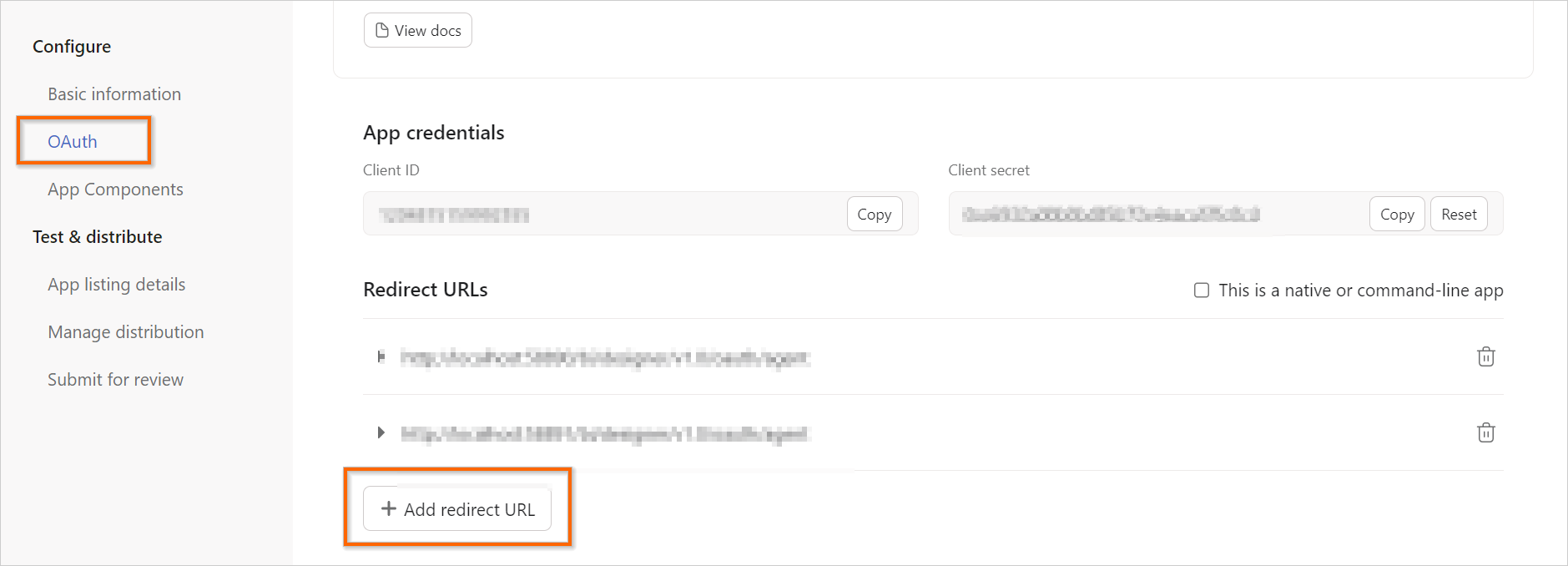
-
Add the Redirect URL as mentioned here and click Add. The Bold BI redirect URL should be added in the proper format required. Please refer to this URL structure:
https://<yourdomain>/bi/designer/v1.0/oauth/agent.
NOTE: Save the Client ID and Client secret in Bold BI by following the OAuth Configuration.
Authentication with Asana
To authenticate with the Asana web service, follow these steps:
-
Click on the data source, which will prompt a login window. Enter your Asana account credentials to authorize.
-
Click Allow in the authorization window to accept the scopes requested by Bold BI dashboards.
NOTE: If permission is denied, the account will not be accessible from the dashboard.
-
Provide a name to identify the account and click Next.
-
You have successfully authorized your connection. Click Connect to continue with the data source connection.
-
To connect via an existing account, refer Connected Accounts.
NOTE: If you need to connect to another account, click Connect New Account.
Connect to Asana
Create Asana data source
After successful authentication, the NEW DATA SOURCE configuration panel will open. Follow these steps to create an Asana data source:
-
Enter a name and optional description for the data source.
-
Choose the Extract Engine
-
Enter a valid Asana REST API endpoint in the URL textbox. Refer to the Asana API documentation for more details.
Example:
https://app.asana.com/api/1.0/projects -
Select GET method for the REST API in the Method combo box.
-
In Max Rows, enter the maximum number of rows to be fetched from the Asana data source. This value is used to fetch the data from Asana data source via pagination. And This option is only applicable to Bold BI Extract.
-
Choose a time interval for Refresh Settings using the combo box to trigger the Rest API request periodically to keep the data in sync with our dashboard.
-
Select JSON data type in the Data Format combo box.
-
The authentication type will be set to Asana automatically since OAuth is used for authenticating with the Asana account.
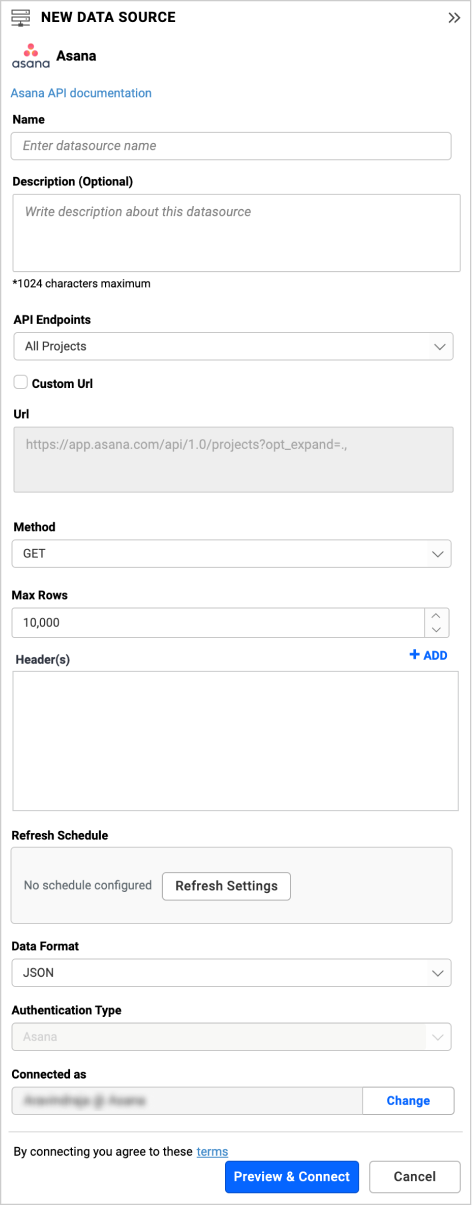
You can also edit the connection information set here using the Edit Connection option.
Additional information
| Max Rows | Most REST APIs return only a limited amount of data on a single API request. To retrieve the necessary amount of data, you can set a value in this field. Pagination is handled internally and will fetch the required data. |
| Refresh Settings | The period of time before the next refresh call is triggered. This will automatically trigger a call to the API configured in the data source to keep the data up to date. If you do not want to sync your new data, choose ‘Never’. |
| API Limits |
To keep it available for all users and stability Asana enforces multiple kinds of limitations. The free domain have 150 request per minute and the premium domain have 1500 request per minute.
In addition Search APIs are limited to 60 requests per minute. |
Sample queries
Projects
https://app.asana.com/api/1.0/projects
Plans
https://app.asana.com/api/1.0/plan
Project Section
https://app.asana.com/api/1.0/projects/<:project_gid>/sections
NOTE: The project ID can be found in the URL of the project in the Asana application. For example, open the project in the Asana application and locate the project ID in the address bar, such as
https://app.asana.com/0/**1111094557386982**/list.
To retrieve specific project data, you must replace the project ID in the API endpoint of the data source creation:
https://app.asana.com/api/1.0/projects/**1111094557386982**/sections
Tasks (Search)
https://app.asana.com/api/1.0/workspaces/<:workspace_gid>/tasks/search
NOTE: The workspace ID can be found in the URL of the workspace in the Asana application. For instance, open the workspace in the Asana application and find the workspace ID in the address bar, like.
https://app.asana.com/0/**850617776313575**/list.
To retrieve specific workspace data, you need to replace the workspace ID in the API endpoint of data source creation:
https://app.asana.com/api/1.0/workspaces/**850617776313575**/tasks/search
Projects from Team
https://app.asana.com/api/1.0/teams/<:team_gid>/projects
NOTE: The team ID can be found in the URL of the team in the Asana application. For example, open the team in the Asana application and locate the team ID in the address bar, such as.
https://app.asana.com/0/**1200407026130215**/list.
To retrieve specific team data, you must replace the team ID in the API endpoint of data source creation:
https://app.asana.com/api/1.0/teams/**1200407026130215**/projects
Preview and data import
-
Click Preview & Connect to establish a connection with the configured settings.
-
The Choose Schema(s) dialog will appear. The schema represents the key fields of JSON data retrieved from the Asana Rest API request. This dialog shows a list of schemas in treeview and their corresponding values in a grid for preview. Select the required schema(s) from the treeview to use in the designer and then click Connect.

-
Now, the data design view page with selected table schema opens. Drag and drop the table.
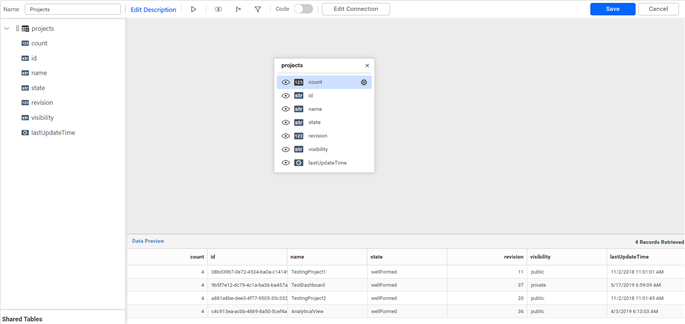
-
Click Save to save the data source with a relevant name.
Connected accounts for OAuth data sources
If you have already logged into the account and authenticated with the web data source, the account information will be listed here. You can select one of the accounts or connect to a new account by clicking the Connect New Account button.
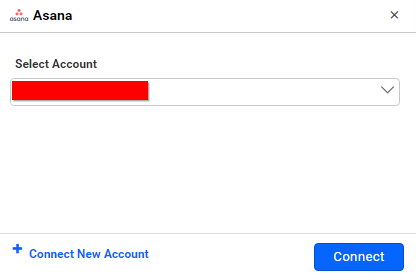
You can edit, delete, and re-authorize this account from the Connected Accounts page.
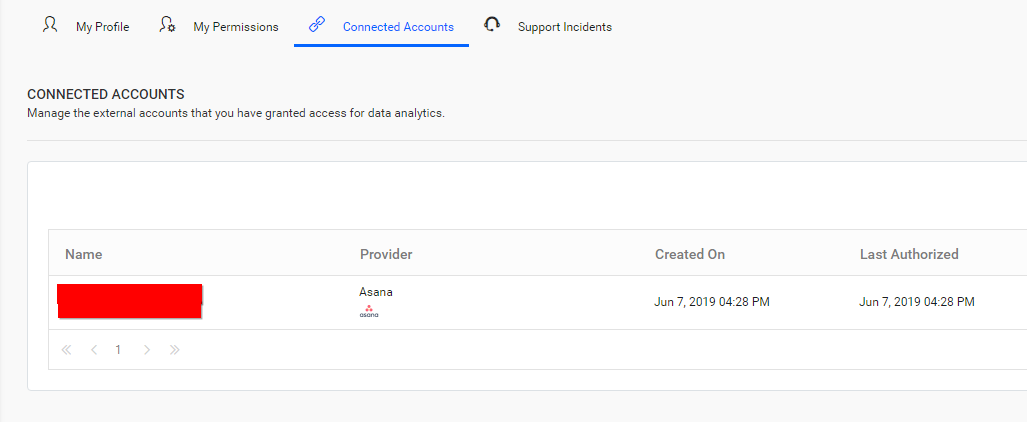
Related links
- Choose Asana data source
- Authentication with Asana
- Connect to Asana
- Connected accounts for OAuth data sources
- Related links
Having trouble getting help?
Contact Support- Choose Asana data source
- Authentication with Asana
- Connect to Asana
- Connected accounts for OAuth data sources
- Related links
Having trouble getting help?
Contact Support